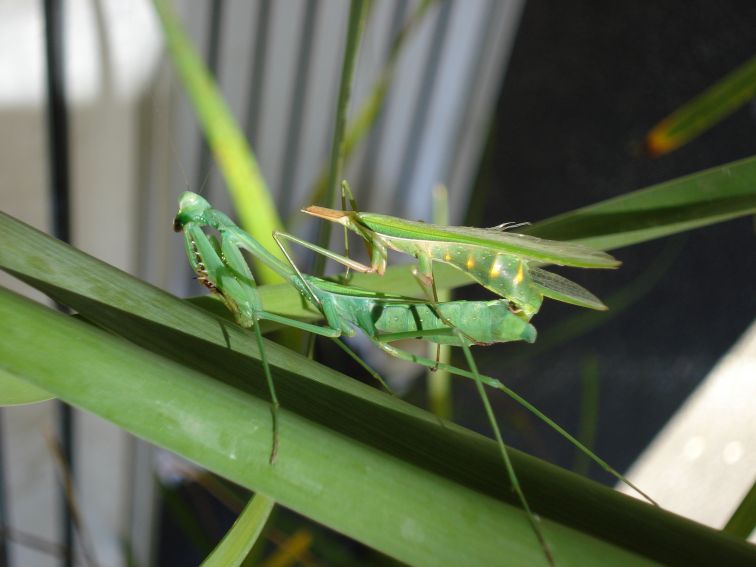This article concerns honesty. The femme fatale is classically a lady who is attractive and yet dangerous. This description perfectly fits the praying mantis, in all its many species. Some have proved very invasive, as in Portugal recently , but many are known best from their native regions, as in this case with the common Australian species Female mantis are always bigger than the weaker
sex, and doesn’t even bother to fly in the larger animals. She leaves that to the guys who flock to her pheromones. That is when the strategy varies according to species. – and depending on how honest the sexes are. Dr. Katherine Barry of Sydney’s Macquarie University wrote an illuminating paper on Pseudomantis albofimbriata in Proc Roy Soc B as Sexual deception in a cannibalistic mating system? Testing the Femme Fatale hypothesis .
If a female is able to consume males, the extra nutrition will benefit her egg development. The selective advantage of eating more than one male could outweigh ant disadvantage such as a shortage of remaining males. The false garden mantid of Australia is common and therefore easily available for this set of experiments. Chemical deception in this species would involve a dishonest lady pretending she was in fine fettle (well fed and full of eggs) even if she was poorly-fed. Her body condition in itself appears to be unrecognised by males. Only the pheromone (smell) signal is used to discriminate.
This is the femme fatale theory of mantid deception. Only poorly fed females produced pheromones that attracted many males, while most others seemed to operate an honesty policy where their attractiveness matched their fecundity. Spiders that operate a similar sexual cannibalistic system have so far proved to be honest. Pheromones are much more common in insects, and so the dishonesty may be simpler. Other mantids studied have also proved to be honest about their signalling, so it is very significant that this species is not.
100 late juvenile Pseudomantis albofimbriata from the Sydney area were collected, mainly from the eastern Australian Lomandra longifolia (basket grass) bushes. The females were treated to 4 feeding regimes, called Good, Medium, Poor and Very Poor and fed until they all had eggs in their ovaries. The result was a sliding scale of body condition among the ladies, correlated with their fecundity. For most females, the same correlation applied to their attractiveness to males. Honesty seemed to rule ---.
The price of being in poor condition, with few eggs would be thought to be less attractiveness, but the Very Poor
individuals in this research have evolved dishonest strategy. They attract more males than any others with a level of pheromones that cannot be measured, but must have been very high. Their future reproductive potential (not very relevant in mantids) and their survival are put at risk by investing so much energy in chemical attraction, but this is how they pass on their genes and their strategy to the next generation.
And what about the males? These poorly fed females are 90% likely to cannibalise the male. His body continues mating in mantids even without the head, as our unfortunate male here shows. He can then be consumed at her leisure, and help feed his own offspring. He has only a 50% chance of copulating with this female in the first place, compared to 100% with a well fed female. So the male cost is cannibalism and little prospect of extensive paternity. My advice would be for them to copy the evolution of the low fed femmes fatales and counter their attraction to these dishonest ladies. But evolution cannot be directed. Luckily there is only one species known to have femmes fatales – apart from our own, of course!!!










